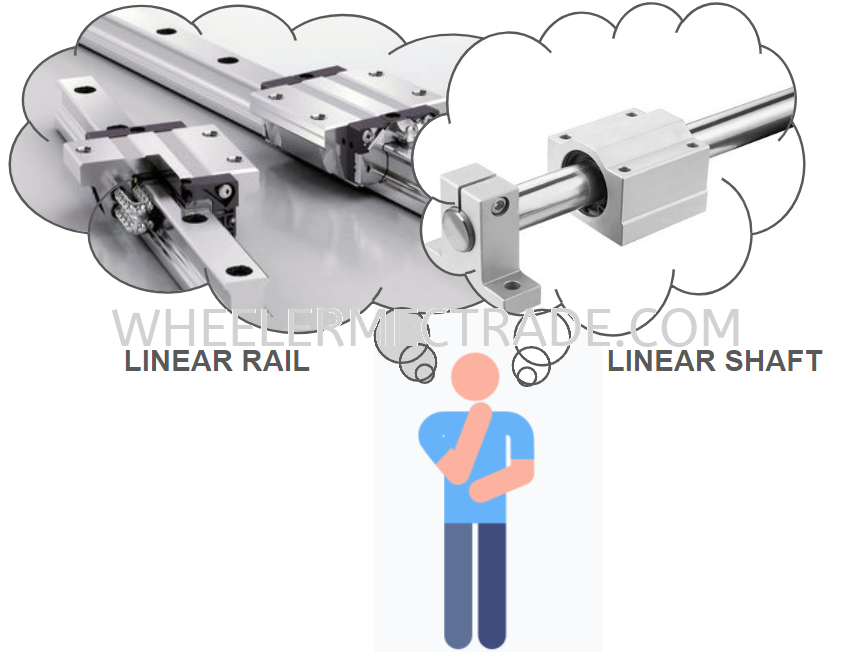Linear Shaft vs Linear Rails
07 Dec 2023


View Full Size
Both linear shafts and linear rails are used for linear motion, but there are some key differences between them:
Linear shafts:
- Simple design: A round shaft made of steel, stainless steel, or hardened chrome.
- Lower cost: Generally cheaper than linear rails.
- Easy to install: Can be supported by bearings or bushings.
- Less accurate: Can bend or deflect under load, leading to less precise motion.
- Lower load capacity: Not suitable for high-load applications.
- Higher friction: Requires more lubrication than linear rails.
- Limited self-alignment: Can twist or rotate under load, requiring additional components to prevent it.
Linear rails:
- More complex design: Consists of a hardened steel rail with rolling elements like ball bearings or rollers.
- Higher cost: More expensive than linear shafts.
- More difficult to install: Requires precise alignment and mounting.
- More accurate: Offers more precise and consistent motion due to its rigid design.
- Higher load capacity: Can handle heavier loads than linear shafts.
- Lower friction: Requires less lubrication than linear shafts.
- Self-aligning: Some types of linear rails can self-align, compensating for minor misalignment.
Key differences:
Choosing between linear shafts and linear rails:
The best choice for your application will depend on several factors, including:
- Required level of accuracy and precision
- Expected load
- Budget
- Complexity of installation
- Need for self-alignment
Here are some general guidelines:
-
Use linear shafts for:
- Low-cost applications
- Simple designs
- Light loads
- Non-critical applications where high accuracy is not required
-
Use linear rails for:
- High-precision applications
- Heavy loads
- Complex designs
- Applications requiring self-alignment
Here are some additional resources that you may find helpful:
- Linear rails vs. linear rods – which are better? https://www.matara.com/technical-articles/linear-rail-faqs/
- Round shaft or profiled rail for linear motion? How to choose https://www.linearmotiontips.com/round-shaft-or-profiled-rail-how-to-choose/
- Linear Ways vs Linear Rails vs Linear Rods (Im searched out and still lost) https://www.cnczone.com/forums/linear-and-rotary-motion/167612-cnc.html

